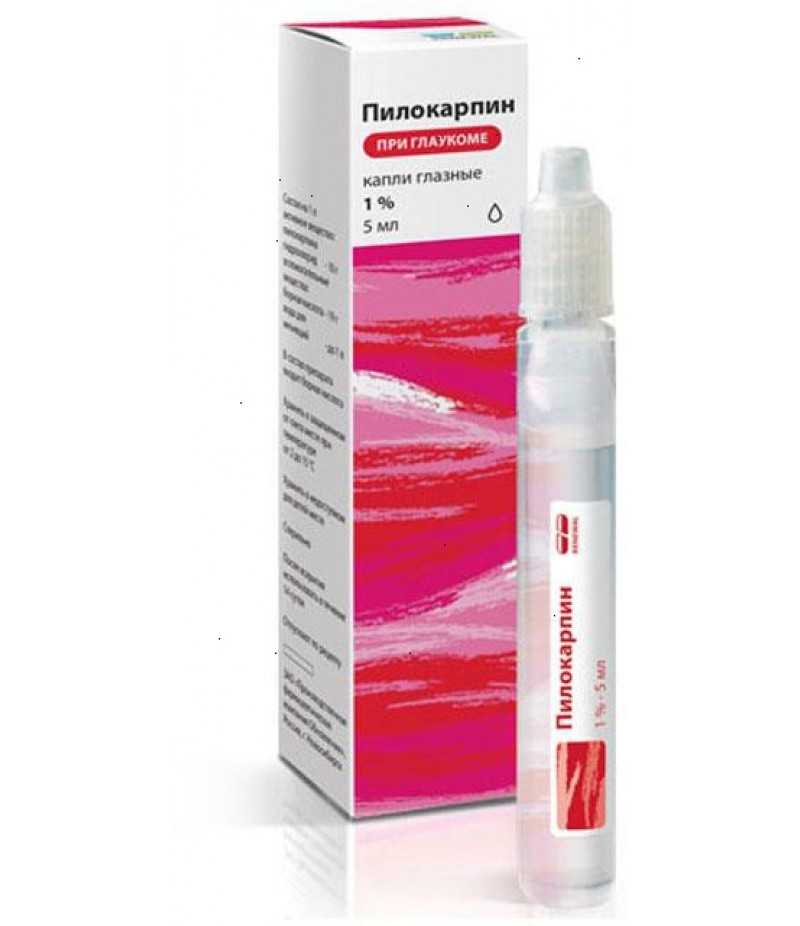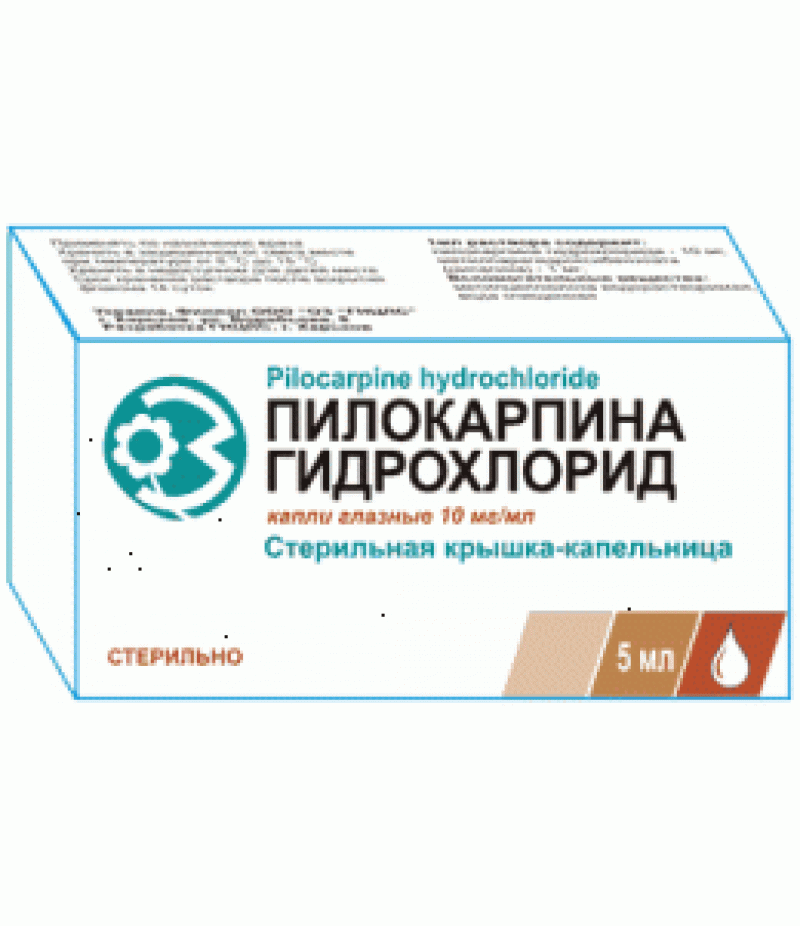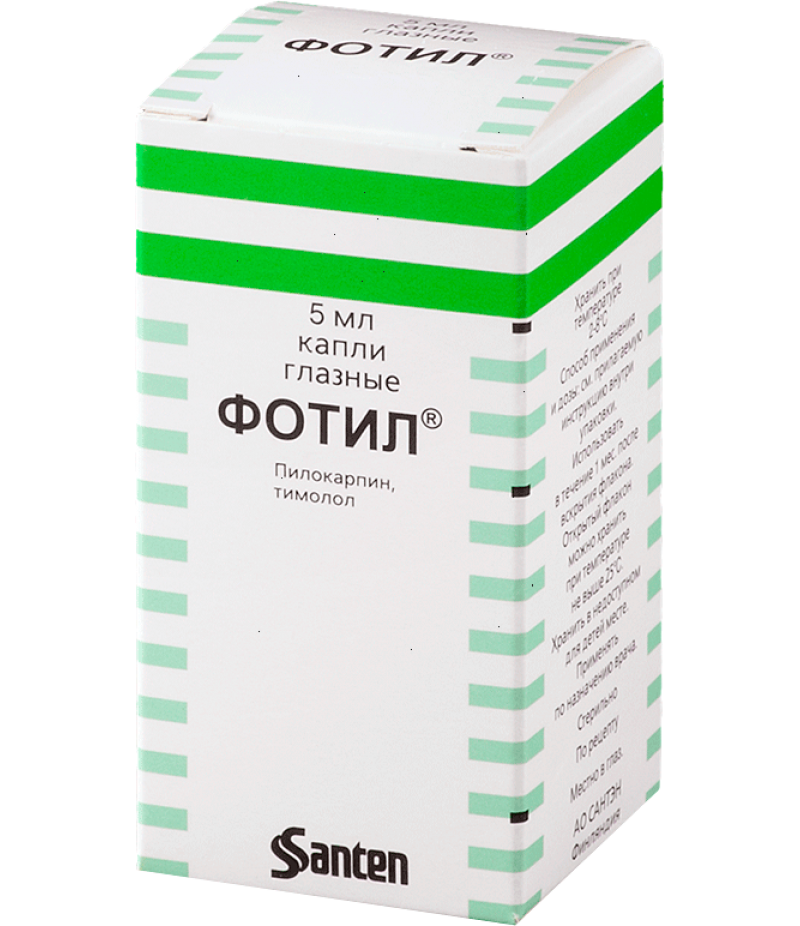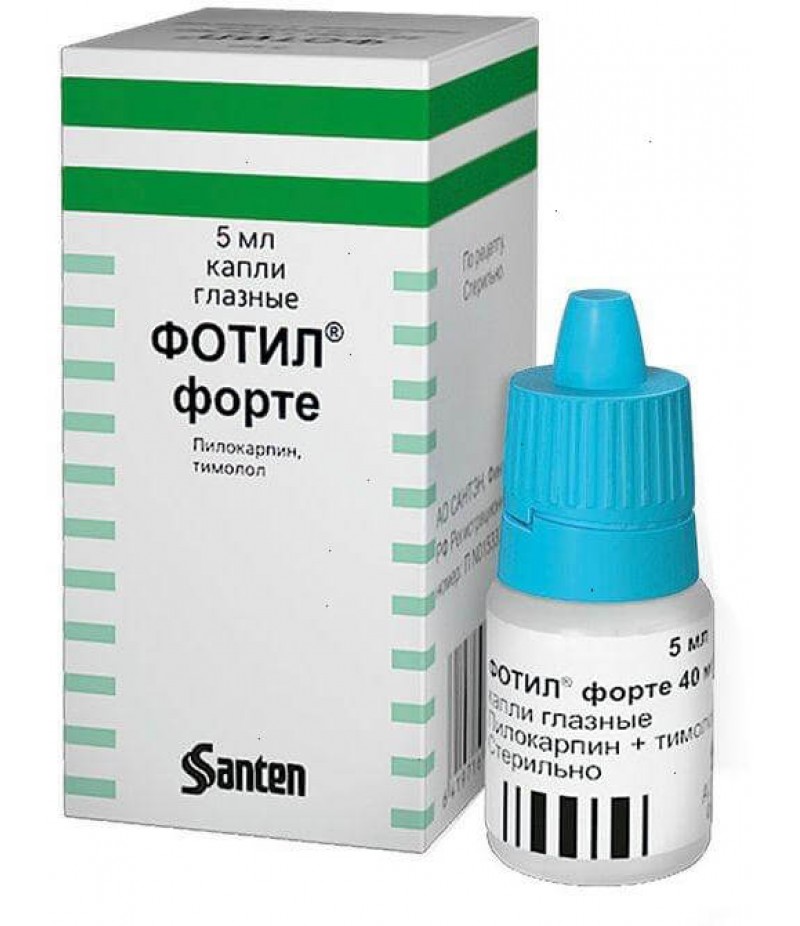Pilocarpine drops 1% 5ml
- $5.20
- 3 or more $4.99
- Availability:In Stock
Pilocarpine instructon for useReed more and buy Pilocarpine hereCompositionOne milliliter of the drug eye drops Pilocarpine 1% contains 10 mg pilocarpine hydrochloride.As an auxiliary element contains
Tags: drops
Pilocarpine instructon for use
Reed more and buy Pilocarpine here
Composition
One milliliter of the drug eye drops Pilocarpine 1% contains 10 mg pilocarpine hydrochloride.
As an auxiliary element contains boric acid and water for injection.
Form of issue
Colorless transparent liquid. Drops of 5 or 10 ml in a vial. The bottle is packed in a cardboard box.
pharmachologic effect
Antiglaucomed.
Pharmacodynamics and pharmacokinetics
Pharmacodynamics
Pilocarpine belongs to the pharmacological group of M-cholinomimetic drugs. The mechanism of its action is caused by the excitation of a number of peripheral M-cholinergic receptors, this in turn leads to a reduction in the ciliary muscle and radial muscle of the iris, accompanied by a decrease in the pupil and release of the angle of the anterior chamber of the eyeball, an improvement in drainage of the intraocular fluid. All of this as a whole leads to a weakening of intraocular pressure and stimulates trophic processes in the eyeball. Reduction of ophthalmotonus, as a rule, is 3-4 mm Hg. Art.
Pharmacokinetics
Upon contact with the conjunctiva, the agent penetrates through the cornea and concentrates mainly in the aqueous humor of the eyeball after half an hour. The half-life of the membranes of the eye is 1.5-2 hours, but the effect of the drug on the values of intraocular pressure is fixed for another 4-8 hours. The agent is not metabolized in the tissues of the eyeball, but is removed from the intraocular area, inactivated by hydrolysis in the liver and blood. Half-life from the body is 30 minutes.
Indications for use
secondary glaucoma (optic nerve atrophy, retinal artery obliteration, retinal vein thrombosis, pigmentary degenerative changes in the retina);
exacerbation of glaucoma;
chronic type of open-angle glaucoma;
the need to reduce the pupil after the appointment of mydriatic;
abscess of the cornea.
Contraindications
iritis, cyclit, uveitis, iridocyclitis, keratitis and other eye diseases, in which a pupil reduction is undesirable (after eye surgery);
a paradoxical reaction to the agent with a stagnant type of glaucoma;
the drug should be used carefully for patients with retinal detachment in the past, young patients with a high degree of myopia, as well as acute eye diseases of an inflammatory nature, bronchial asthma in the past and allergic reactions to the drug components.
Side effects of Pilocarpine
local side reactions: miosis, rapid pain in the eye, spasm of accommodation, redness, decreased visual acuity, pain in the temples and paraorbital area, increased lacrimation, dermatitis of the eyelids and allergic conjunctivitis, superficial keratitis, photophobia, pruritus in the eyes, myopia, conjunctival hyperemia , erosion and edema of the cornea, a prolonged contraction of the ciliary muscle, detachment of the retina;
systemic adverse reactions: bronchospasm, dizziness, headache, hypersalivation, rhinorrhea, increase or decrease in blood pressure, pulmonary edema, vascular disorders, bradycardia, excessive sweating, vomiting, nausea, diarrhea.
Long-term treatment can cause signs of follicular conjunctivitis, keratopathy, contact dermatitis in the eyelids, cataracts, clouding of the lens, and damage to the conjunctival tissue.
Instructions for use (Method and dosage)
Eye drops Pilocarpine, instructions for use
Pilocarpine hydrochloride is digested in both eyes 1-2 drops every 6-12 hours. The daily dose and the duration of the course of therapy should be determined by the attending physician depending on the indicators of intraocular pressure. If necessary, the drug can be combined with β-adrenoreceptor blockers.
In the case of an acute attack glaucoma of the closed-type type is prescribed in the first hour of 1 drop every quarter of an hour; in the next hour 1 drop every half hour; in the next 2 hours, one drop every hour; and further - 3-6 times a day until the symptoms of the attack disappear.
Overdose
Signs of an overdose of Pilocarpine: nausea, bradycardia, persistent miosis, visual impairment, pain in the eye, headache. When developing such symptoms, the drug should be discarded.
Treatment of an overdose is usually symptomatic. Apply Atropine and Tropicamide, it is possible to use specific antidotes.
In severe bradycardia caused by overdose, parasympathomimetics are administered, for example, atropine parenterally at a dose of 0.5-2 mg.
Interaction
With simultaneous use with adrenostimulators, antagonism of action may develop.
Atropine and other drugs from the group of M-holinoliticheskih funds - antagonists Pilocarpine.
Timolol and Mezaton further lower the intraocular pressure.
M-holinostimulirubnoe action of the drug is reduced when used with derivatives of phenothiazine, clozapine, tricyclic antidepressants, Chlorprotixen and is enhanced when used with anticholinesterase drugs.
It is possible to use the drug together with β-adrenoblockers or inhibitors of carbonic anhydrase.
Possible bradycardia and lowering blood pressure during general anesthesia with the use of Ftorotan.
Terms of sale
You don't need a prescription to buy Pilocarpine.
Storage conditions
When storing, observe the temperature regime from 8 to 15 degrees. Keep away from children.
Shelf life - three years. After opening the bottle is suitable for 28 days.
special instructions
Directly before use, you should warm the vial to the body temperature with the drug, holding it in the palm of your hand.
The cap is unscrewed, then removed and, slightly squeezing the bottle body, the solution is buried in the eye. Having finished the procedure, the lid is closed tightly.
It is necessary to use this medication with extreme caution in patients with acute type of heart failure, recent myocardial infarction, arterial hypotension or hypertension, severe bradycardia, hyperthyroidism, urinary tract obstruction, vasomotor instability, epilepsy, Parkinson's disease.
An increase in the frequency of instillation above the recommended regimen is not advisable, since it does not cause a more severe hypotensive effect and can cause general undesirable reactions of the body.
The drug has virtually no effect on ophthalmotonus indicators in healthy individuals. It is desirable for 1-3 months during the year to replace Pilocarpine with other non-miotic drugs.
Children
The drug is not intended for the treatment of children.
In pregnancy and lactation
It is possible to use the doctor's prescription and in the presence of strict indications.
Reviews
Comments of patients after using the remedy are usually exceptionally positive. Patients also note the low cost of the drug.




